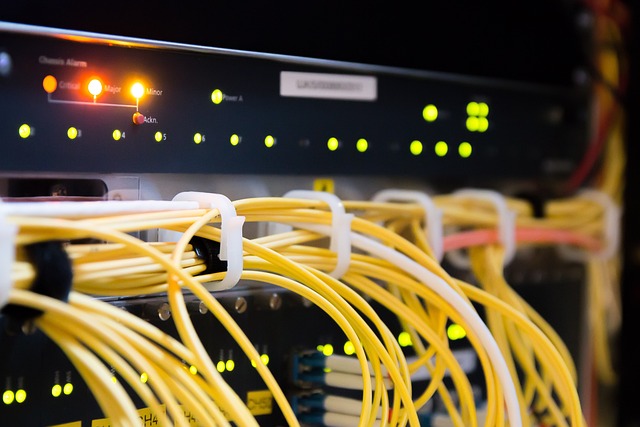Distributed Fiber-Optic Signal Processing for Continuous Subsurface Monitoring
Distributed fiber optics and local processing enable persistent subsurface observation without repetitive manual surveys. By combining fiber optics with edge computing and analytics, operators can identify acoustic, thermal, and pressure indicators of anomalies and integrate results with mapping and calibration workflows.

Distributed fiber optics and distributed signal processing are enabling continuous subsurface monitoring across pipelines, tunnels, and buried networks. Instead of intermittent manual surveying, continuous measurements capture evolving signatures from acoustics, temperature gradients, and pressure dynamics. Local processing reduces latency and data transport, allowing systems to highlight potential anomalies and support refined mapping and calibration. This persistent approach improves situational awareness while preserving the ability to validate findings through targeted field inspection and complementary sensors.
How fiber optics support subsurface sensing
Fiber optics serve as both the sensing element and communications medium for long-range monitoring. Techniques such as distributed acoustic sensing (DAS) and distributed temperature sensing (DTS) infer vibrations and thermal changes from variations in backscattered light along kilometers of cable. The continuous spatial coverage reduces blind spots compared with point sensors and produces high-density mapping of subsea floors or buried corridors. When fiber optics are combined with additional sensors and georeferenced mapping, they provide contextual signals that improve the precision of locating and characterizing subsurface events.
How acoustics and thermography detect leaks
Acoustics capture transient pressure waves generated by fluid escape, mechanical impacts, or ground movement; the frequency and amplitude content help differentiate sources. Thermography, accessed via DTS or targeted infrared surveys, detects temperature anomalies caused by escaping fluids or altered thermal conduction in soils. When acoustic spikes coincide with local thermal excursions along a fiber optic trace, confidence increases that the event is substantive rather than environmental noise. Correlating acoustic and thermal patterns improves discrimination between leaks and benign disturbances such as surface traffic or weather-driven changes.
Role of pressure sensors and mapping
Pressure sensors provide point measurements that corroborate distributed signatures seen on fiber optic traces. Correlating pressure trends with spatially resolved fiber optic responses enables precise mapping of flow dynamics and potential breaches. Mapping tools ingest time-stamped fiber data and point-sensor readings to visualize incidents on plan and profile views, which streamlines subsequent surveying and targeted inspection. Accurate georeferencing and regular alignment between modalities ensure that anomalies identified by distributed sensing can be located and accessed efficiently in the field.
Calibration and surveying best practices
Robust calibration aligns the responses of fiber optics, thermography, acoustics, and pressure sensors so analytics produce reliable alerts. Best practices include baseline characterization to document ambient noise, commissioning tests using known test signals, and cross-validation with handheld instruments. During field surveying, technicians should verify cable coupling to the medium, confirm installation records, and update mapping layers. Periodic recalibration after maintenance or environmental shifts preserves sensitivity to subtle changes and reduces false positives during continuous monitoring.
Detecting anomalies with edge computing
Edge computing processes raw fiber optic data close to the cable, reducing bandwidth demands and latency. Local processing nodes execute real-time signal conditioning and anomaly detection, isolating characteristic acoustic patterns or abrupt temperature and pressure shifts. Systems can then prioritize and forward condensed alerts to central platforms, trigger additional high-fidelity captures, or initiate field response workflows for rapid inspection. Processing at the edge supports scalable deployments by limiting data transfer and enabling faster operational decisions.
Analytics for continuous monitoring
Analytics transform time-series and spatial measurements into actionable insights. Signal-processing techniques extract dominant frequencies and transient signatures; statistical models separate routine variability from exceptional events; and machine learning models can refine detection criteria over time. Visualization layers overlay anomalies on geographic maps, linking events to maintenance histories and asset metadata. Combined analytics help distinguish progressive degradation from single incidents and support planning for targeted surveying, calibration updates, and prioritized maintenance actions.
Conclusion
Distributed fiber optic signal processing, paired with acoustics, thermography, pressure sensors, systematic mapping, and disciplined calibration, supports a continuous subsurface monitoring strategy that reduces reliance on episodic surveys. Edge computing and analytics make it possible to process dense, continuous data streams efficiently, highlight meaningful anomalies, and direct investigative resources where they are most needed, improving overall infrastructure visibility and operational readiness.






